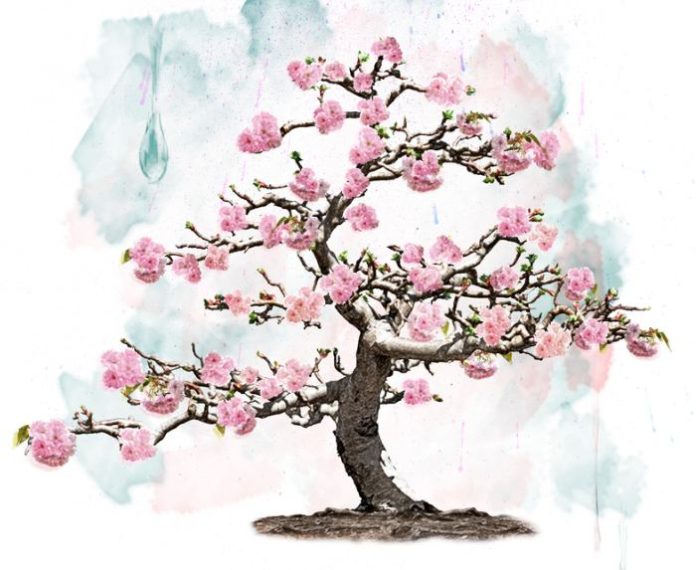When most people think of watercolor painting, they think of a thin transparent color on smooth paper. Usually, visitors to a watercolor art show talk about brushwork, variegated wash, tone, washes, wet on wet techniques, and the like. Rarely do they talk about texture?
But texture can be an exciting addition to a watercolor painting. It’s easy to do if you know a few tricks of the trade.
1). Stamping with tissue or sponges or almost any material you find can be useful in adding a textured look to your watercolor painting. Leafy trees and flowers often benefit from this technique.
2). Wax Resist. You can use candles or crayons to draw on your paper before you lay on the wash of the watercolors. The wax will resist the watercolor paint and create interesting textured areas.
It requires some thinking ahead since the waxy areas go on first and in many cases, you can’t see the white candle wax on your paper.
3). Graffito or scratching is a technique that can be especially useful in landscapes and other styles where you want to add detail in an interesting way.
Scraping across the paper with a sharp instrument like a penknife will result in paint being sucked into the bruised lines on the paper, adding depth and texture for depicting leafless trees and other detail.
This term, which comes from the Italian word for scratching, is also used with ceramic glazes and with wax resist.
4). Tissue paper. Apply your paint to your paper and then take a sheet of tissue paper and spread it out over the painting, letting the creases and folds press against the paint as you press down on it with your palms. Leave the tissue paper and the painting to dry for a while, but be careful not to leave it too long or it will be glued in place. Carefully remove the tissue paper and see the textured design created by the tissue paper folds and crinkles.
5). Plastic Wrap texture works similarly to tissue paper texture, only you use plastic wrap from the kitchen to press over the painting’s wet surface.
6). Splattering is a trick which adds texture to a watercolor painting. You can get your paper and then tap your brush against the forefinger of your other hand, splattering a spray onto the paper.
7). Alcohol wash consists of a similar technique carried out by dipping a Q tip in alcohol and dripping or spattering the alcohol onto the web color of the watercolor painting. You can let the painting dry a bit and they apply more alcohol drops for even more texture.
8). Spraying is another watercolor texture technique that uses a toothbrush loaded up with paint. Then you run your thumb across the bristles, propelling a fine aerosol flying off the bristles.
9). Salt texture. We all know salt dissolves in and mixed with water. When the water is in a watercolor painting, and you sprinkle salt in strategic places, the results can be amazing.
After you have let the salt dry on the painting, take a dry small cellulose sponge and rub the loose salt off of the painting.
10). Backwash with clear water on a wet painting can create interesting textured effects, especially when water is splashed or flicked from a brush onto the wet color.
Now you know some great tricks. Grab your brushes and your paints and start having some fun!

